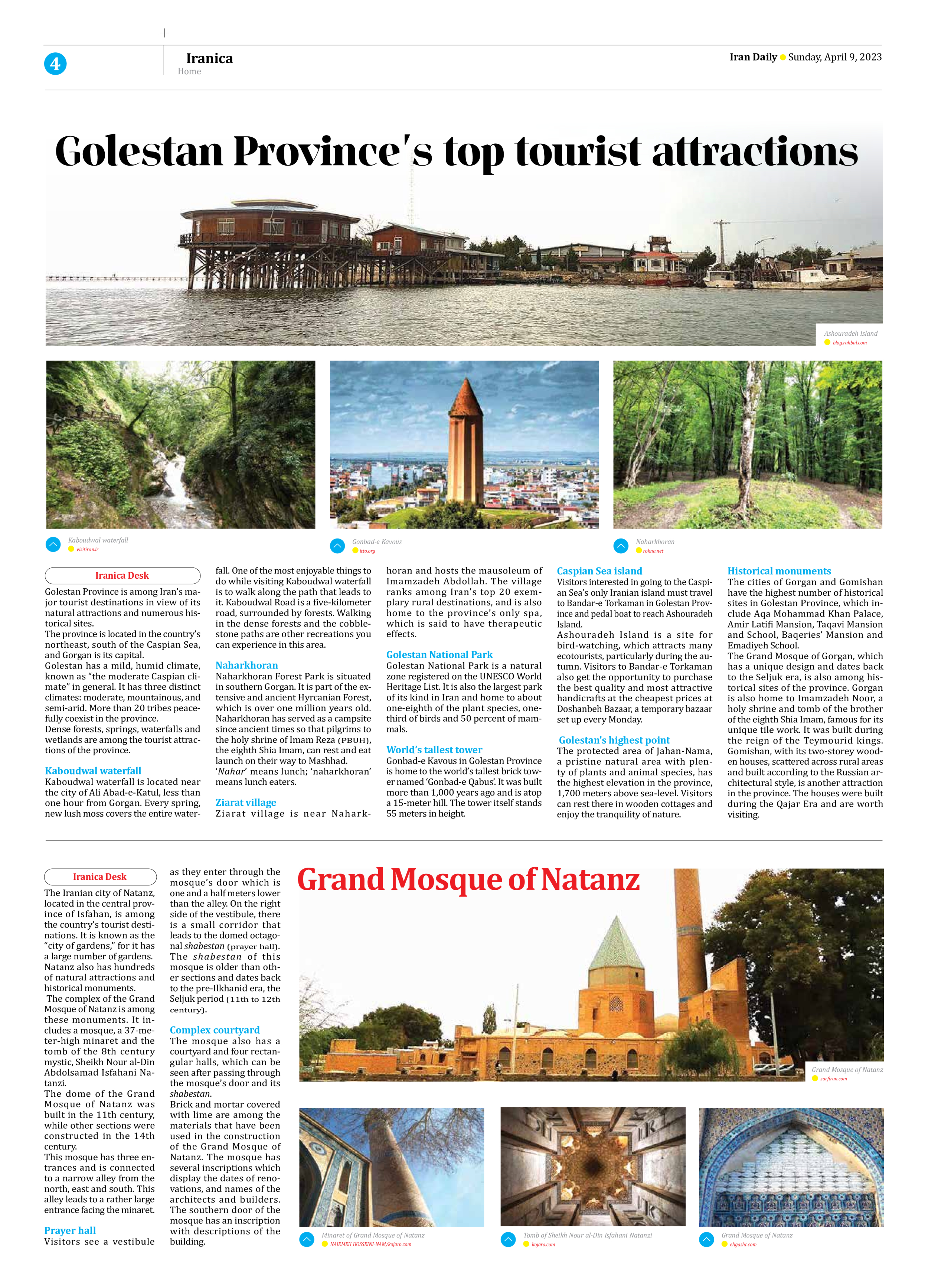
Grand Mosque of Natanz
The Iranian city of Natanz, located in the central province of Isfahan, is among the country’s tourist destinations. It is known as the “city of gardens,” for it has a large number of gardens.
Natanz also has hundreds of natural attractions and historical monuments.
The complex of the Grand Mosque of Natanz is among these monuments. It includes a mosque, a 37-meter-high minaret and the tomb of the 8th century mystic, Sheikh Nour al-Din Abdolsamad Isfahani Natanzi.
The dome of the Grand Mosque of Natanz was built in the 11th century, while other sections were constructed in the 14th century.
This mosque has three entrances and is connected to a narrow alley from the north, east and south. This alley leads to a rather large entrance facing the minaret.
Prayer hall
Visitors see a vestibule as they enter through the mosque’s door which is one and a half meters lower than the alley. On the right side of the vestibule, there is a small corridor that leads to the domed octagonal shabestan (prayer hall).
The shabestan of this mosque is older than other sections and dates back to the pre-Ilkhanid era, the Seljuk period (11th to 12th century).
Complex courtyard
The mosque also has a courtyard and four rectangular halls, which can be seen after passing through the mosque’s door and its shabestan.
Brick and mortar covered with lime are among the materials that have been used in the construction of the Grand Mosque of Natanz. The mosque has several inscriptions which display the dates of renovations, and names of the architects and builders. The southern door of the mosque has an inscription with descriptions of the building.







